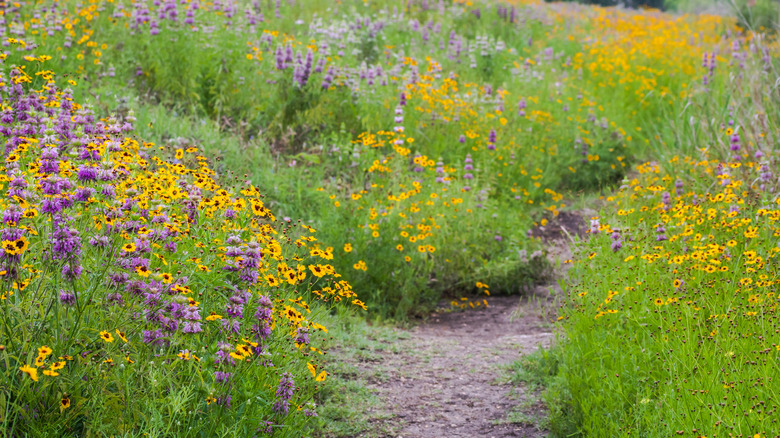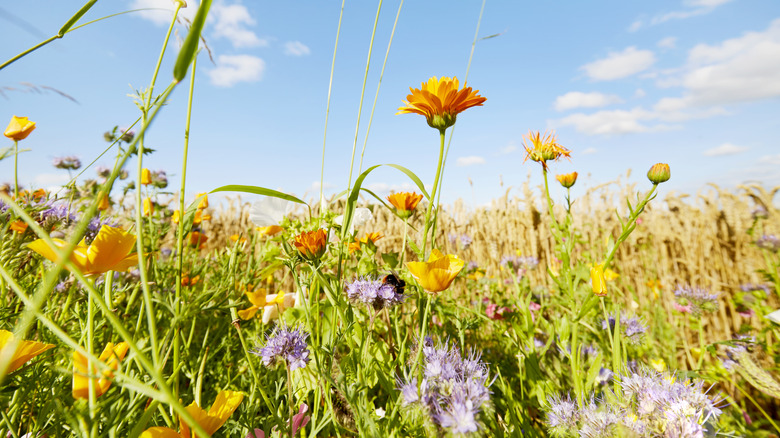Why Wild Landscaping Is The Future Of Gardening, And Where To Start With Yours
If you've been fighting the wildflowers in your garden for years in vain, maybe it's time to let things go a little. Wild landscaping is having a moment, and it might just be the future of gardening. Going wild means worrying less about perfectly manicured shrubs and grass and more about embracing nature. Some fear that conventional lawns have played a large part in declining wildlife population over the years. Wild landscaping might be one way to restore balance, while creating a healthier environment for us, too.
When creating a wild landscape, focus on planting native shrubs and flowers. You might even replace grass with your own wildflower meadow. It's all about moving away from pesticides, sprinklers, and gas-guzzling lawnmowers. Meadows, for instance, require less water and chemical fertilizers than traditional lawns. Wild landscaping brings other benefits, too. A thick carpet of native plants can elbow out weeds, giving you more time to enjoy the biodiversity a wild garden brings, including more songbirds and other wildlife.
Since wild landscaping relies heavily on homegrown plants and flowers native to America, your garden might need less water and attention. Also, some native plants – especially older trees – do a better job of absorbing carbon emissions, too. That's just a win-win for everyone. Going wild still involves some measure of thoughtfulness, however. It's not about turning your yard into an abandoned lot filled with weeds, but more about plotting out how best your garden could work as a natural habitat.
How to let your garden go wild
To go wild, you don't have to sell your lawn mower tomorrow and grow wildflowers instead of Bermuda grass. Start with small, incremental steps, like choosing more native plants. Keep in many varieties offered at most garden centers come from far-off places. If you've already put some effort into attracting hummingbirds and butterflies to your garden, expand your offerings with more perennials pollinators will enjoy. And, always remember that plant diversity should be at the heart of any wild landscaping plans.
If you're not sure where to start, try taking the Wildr quiz from Plan it Wild, which will give you your own wild score based on EPA maps and U.S. Forest Service tools. You can also see how you rank in your neighborhood. When done right, wild landscaping should mean less, not more, work for you. One suggestion is to leave leaf and grass debris in your yard, since many wild landscapers believe everything has a purpose. Discarded twigs stacked in one spot can provide a shelter for ground-dwelling birds.
If you're worried about things looking too overgrown, consider garden stepping stones or paths to help bring a little order to the chaos. Also, consider planting with a certain color scheme in mind, so that native blooms coordinate together. Before going wild, know that some homeowner's associations have traditionally resisted wild landscaping ... but that might be changing. New laws on the books in several states help encourage and protect gardeners who want to go natural.

